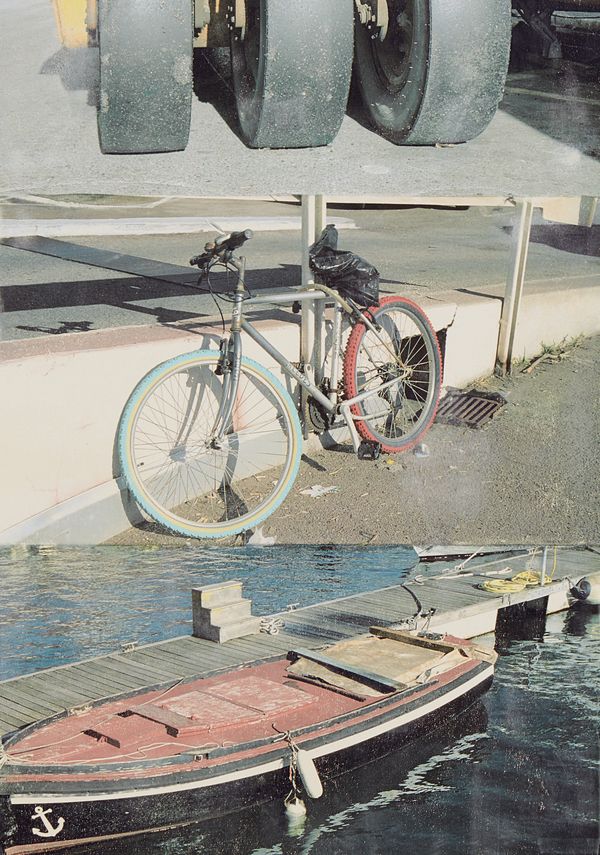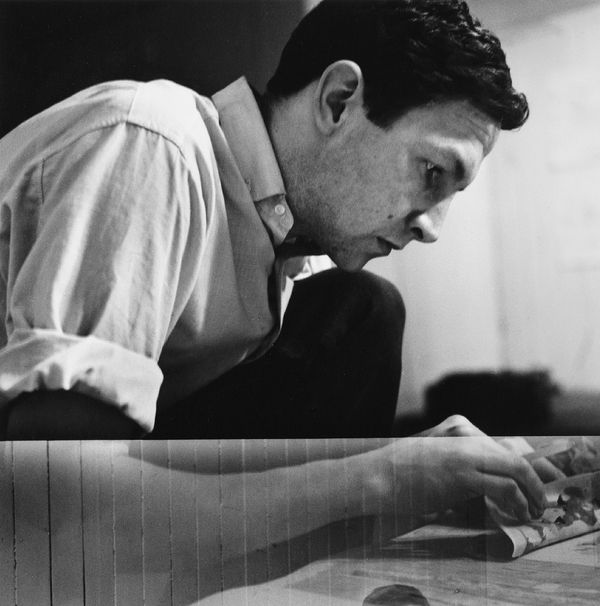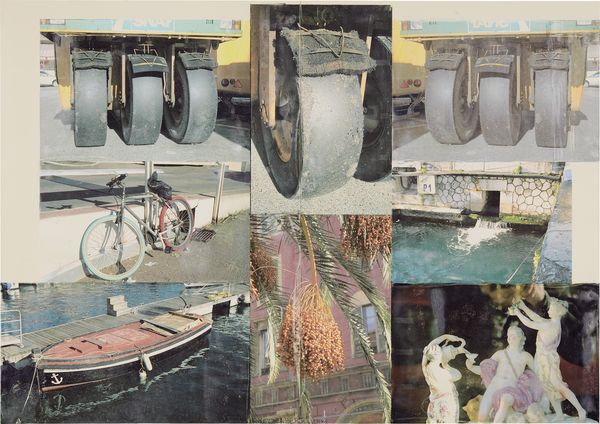Detail of Robert Rauschenberg Deepend (Scenario), 2006
From our upcoming Day Sale, Robert Rauschenberg's Deepend (Scenario) originally premiered at PaceWildenstein in the 2006 exhibition Robert Rauschenberg: Scenarios and the Ancient Incident. His Scenarios cull imagery from the American environment and have been aptly described as "massive 'super' multilayered paintings that tell stories and cry out about American life; they are panoramas that have an epic quality," wrote Oscar Hijuelos for New York's Pace Gallery in 2005.
Rauschenberg's artistic interest spans across every type of medium, working in and conjoining photography, printmaking, papermaking and performance. Most revealingly of his later interest in the flatness of composition, Rauschenberg spent an important period in his early career as a set designer for the groundbreaking choreographers Merce Cunningham and Paul Taylor. As a print maker, Rauschenberg was the first artist to document the technique of transfer printmaking in 1958, when he recognized that when newspaper was soaked in solvent, the image would transfer onto collages and painting.
FRONT STREET STUDIO, 1958. Rauschenberg working on a solvent transfer drawing in his Front Street studio, New York, 1958, Photo by Jasper Johns Photo © Jasper Johns/Licensed by VAGA, New York, NY
This early pioneering technique led Rauschenberg in 1992 to utilize his Iris printer to make digital high-resolution prints of his photographs, and, by the use of dye transfer process, he produced large scale works on paper — or, as seen in this particular wrok, Rauschenberg's Scenarios appear painterly in technique, like a collage of imagery that is both fluid and discrete. Collage for the artist was an early interest of his gleaned from the cubist experiments of Braque and Picasso and the assemblages of the Dadaists. In 2005, Carol Vogel for The New York Times described Rauschenberg's studio work tables "as covered with piles of enlarged photographs — material for his 'Scenarios,' a series of 7-by-10-foot canvases incorporating images of everything from street signs to windswept dunes." Standing up "until my legs give out" is how the artist described his process of meticulously arranging the photographs.
Few artists of Rauschenberg's era so unabashedly strove for beauty, even majesty.
Robert Rauschenberg Deepend (Scenario), 2006
Deepend (Scenario), 2006 presents us with a myriad of clashing images, wheels on a highway truck and airplane, an idle, locked-up bicycle, water rushing, a boat moored to a dock, a neoclassical sculpture of marble nymphs and the fawning palm tree branches with acai berries. Each image, strategically placed, emphasizes a precise movement or condition of arrested movement: wheels spinning, water flowing, Palm leaves wavering in the wind. They are visually unified not only by their common shapes and intimations of motion but also by the way each image has been processed and assembled to create a softly glowing composition; this is suggested but by the illusion of yellow sunlight that uniformly bathes each image within the larger whole.
The power of these collaged images arises from the seemingly haphazard play of shapes and motifs that are ultimately made unified by an underlying, subtle affinity of forms and connotations. As art critic Dan Chiasson recently noted in The New York Times, "In a finished Rauschenberg, you see a goat, a tire, a tennis ball, but more than that, you see the insights that brought them together. Each component keeps its integrity within a composition in which everything contributes to a profound effect of overall beauty.
Indeed, few artists of his era so unabashedly strove for beauty, even majesty: The logic of his work, beginning with cast-offs and flotsam demanded it.It was the dare he put to himself in everything he made."


